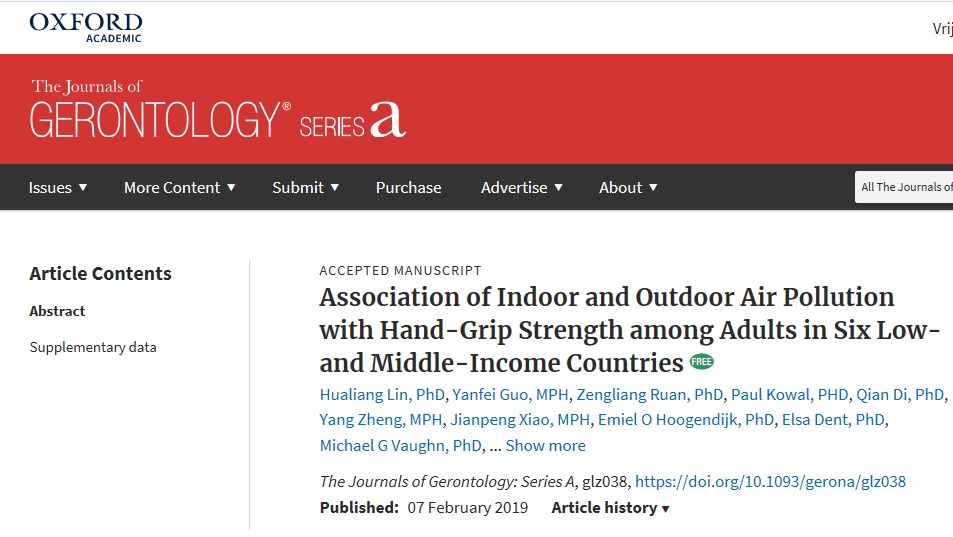We have contributed to an article that was published last week in The Journals of Gerontology – Series A: Medical Sciences. The study, with the title “Association of Indoor and Outdoor Air Pollution with Hand-Grip Strength among Adults in Six Low- and Middle-Income Countries” was conducted by Hualiang Lin and colleagues. It made use of data from the WHO-SAGE study, which includes older adults from six low-and middle-income countries (China, Ghana, Mexico, Russia, South Africa and India). The results showed that indoor and outdoor air pollution was associated with hand-grip strength. Each 10 μg/m3 increase in three years’ averaged concentrations of outdoor PM2.5 corresponded to 0.70 kg (95% CI: -1.26, -0.14) lower hand-grip strength; and compared with electricity/liquid/gas fuel users, those using solid fuels had lower hand-grip strength (β=-1.25, 95% CI: -1.74, -0.75). The study concludes that both indoor and outdoor air pollution might be important risk factors of poorer health and functional status as indicated by hand-grip strength.
These findings do not only apply to low- and middle-income countries. It is very likely that the same associations are present in high-income countries. Although indoor air pollution may be lower in high-income countries due to indoor climate regulation, the outdoor air pollution may be a serious problem. Our institution for example, Amsterdam UMC – location VU University Medical Center, is located in the Netherlands, where the population density is high. This, combined with heavy road- and air traffic (Schiphol airport Amsterdam), may also result in reduced physical performance. Studying the association in high-income countries like the Netherlands is an interesting direction for future research. Also, we need longitudinal studies. The current study is based on cross-section data, which does not allow for any conclusion on causality.
See for more details the full manuscript: https://doi.org/10.1093/gerona/glz038

